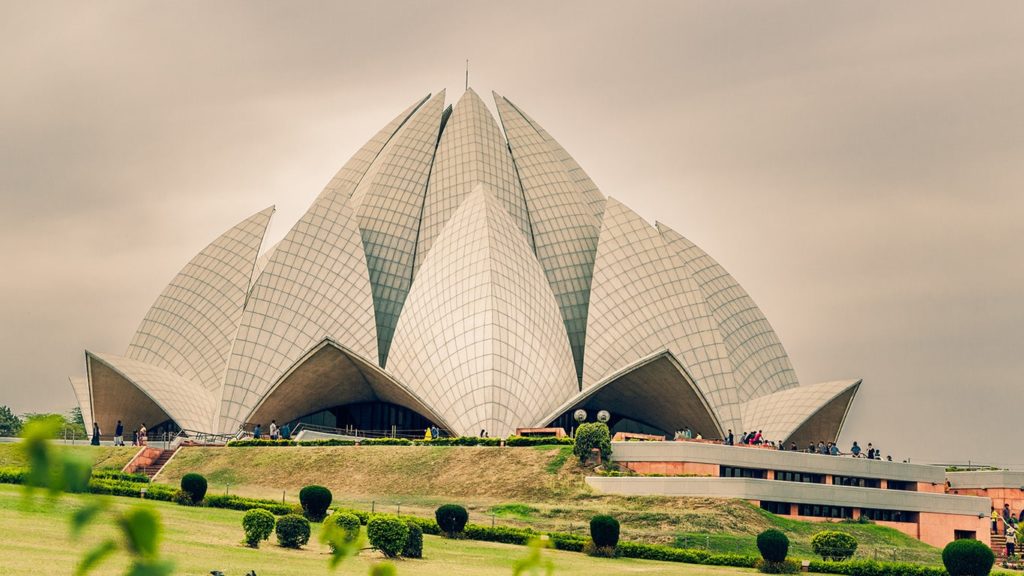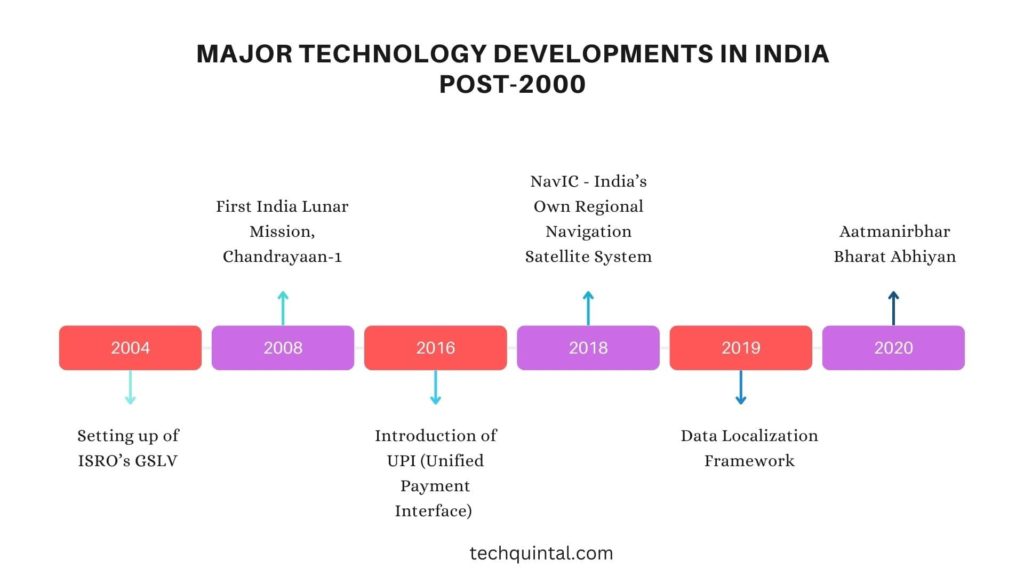
The future is all about technology, and pretty much every nation is realizing this. India is no exception here. The technological advancements at the beginning of the 21st century are the driving force behind the popular career choice of science and technology among Indian students. The best part about technology is that it never puts limitations, but instead shows us ways we can keep exploring. Do you think staying on one planet and advancing will ever quench our thirst for curiosity? No, right! We will always want to know what lies beyond, no matter what. With this, let’s explore the technological developments in India.
India and Technology
India has made quite remarkable advancements, and it is recognized all over the world. There are ingenious brains who have strengthened India’s reputation by making noteworthy contributions in the field of science and technology. We will be looking at different sectors to understand these technological advancements better.
Space
In the year 1975, India launched its first satellite, Aryabhata into space. It completed 60 orbits of the earth before the mission ended. It was one of the most notable moments in Indian history that provided the basis for learning satellite technology. Do you know, individuals in the scientific world think that we should become interplanetary species? It is one of the ways in which we can prevent the major catastrophe from wiping us out.
This is why nations including India are exploring the nearby planets. India launched its first interplanetary mission, The Mars Orbiter Mission (MOM) in the year 2013. Although the mission was designed only for six months, today, almost completing its 7th year, it is still working well and sending data.
In the year 1984, Rakesh Sharma became the first Indian to enter space. The Indian Space Research Organization (ISRO) and the Soviet Interkosmos space program collaborated and launched a space mission where he was the cosmonaut. He was involved in bio-medicine and remote sensing experimental sessions. He took photographs of India from space.
When Indians saw the news conference where he spoke about the country from space, it made millions of them proud. After all, he was the first person from India who was sent to outer space.
Telecommunication
In the same year 1975, the Indian Space Research Organization (ISRO) collaborated with the National Aeronautics and Space Administration (NASA) for the Satellite Instructional Television Experiment (SITE). The experiment demonstrated the capacity of satellite technology.
For the development of India, it was an essential step that showed it was possible to extend communication infrastructure to remote areas. And, this experiment was conducted when even the urban areas didn’t have many televisions. The selected village areas for the experiment were mostly backward parts of the state. Despite facing extraordinary challenges, India was able to achieve success.
In the year 1981, India launched its first communication satellite, Ariane Passenger Payload Experiment (APPLE). It revolutionized the technological and economic growth of the nation. At that time, ISRO had limited infrastructure. They didn’t have enough mainframe computers.
In addition to this, the engineers at IISc, IIT Madras, and TIFR worked night hours to fulfill the computing needs for structural, thermal, and mission analysis. Regardless of all the difficulties they faced, they accomplished their mission.
Medical
We saw examples of the space and telecommunication sector, now let’s look at breakthroughs in the medical sector. Did you know that the second test-tube baby in the world is Indian? She was the first baby in India who was conceived via in vitro fertilization.
To preserve the human embryo, Dr. Subhash Mukhopadhyay used cryopreservation. Globally, this process is favored for medically assisted reproduction. Even though the test tube baby was born in the year 1978, his contribution to science was recognized after 27 years, in 2005.
DNA fingerprinting technology is quite fascinating. Are you aware Dr. Lalji Singh, the father of DNA Fingerprinting in India, made it prominent in research as well as applications? The technique helped to crack high-profile cases and gained popularity. He and his team settled crime and paternity cases using this technology.
Additionally, it was used in agriculture, where it improved yields and quality. In the criminal justice system, we have scientific evidence that proves the crime of the criminal. And, most countries accept the use of DNA evidence.
What are the major technological developments in India?
Technology is playing a major role in developing India as a global power. The Government of India understands the essence of megaprojects & technologies and their role in transforming the country. There are a lot of technological megaprojects that are being worked on and may change the future of our country. Let us have a look at some of these projects and see how they will Impact India.

Bullet Train
Bullet Trains are one of the fastest modes of transportation. They are lightning-fast and having them in a country is a significant step towards a better future. India has been working towards introducing bullet trains for a while now, and it may finally happen after 2026.
Once completed, it will travel at an unbelievable speed of 320km per hour. The first phase of the project connects Ahmedabad and Mumbai, that are two crucial commercial hubs. It will enhance business connectivity and improve the traveling experience from one important city to the other.
Hyperloop Project
Can you imagine traveling the distance between Pune and Mumbai in a few minutes? It may sound impossible right now, but India is working on making this dream a reality. Hyperloop is an even more advanced transportation system than the Bullet train.
In this system, the passenger travels through low-pressure tubes at unimaginable traveling speeds. It works with the help of magnetic levitation technology. Once this project is finished, passengers in India will be able to travel at a speed of a whopping 1200 Km per hour. The project is expected to be finished by the year 2029.
Chenab Bridge
Another mega project that is being constructed in India is the Chenab Bridge. It is going to be like a giant bridge for trains. It is being built high up over the Chenab River in Jammu & Kashmir. One more thing that makes this project special is it is going to be the highest bridge in the world where trains are able to cross. It will exist at a height of 359 meters, which is even taller than the Eiffel Tower. Traveling has been an issue in Jammu & Kashmir, but the completion of this project will provide the solution to the problem forever.
This bridge will allow people to move from one side of the river to the other much faster and easier. The last day of finishing this project will be one of the proudest days for the country as it is a really tough job to build something that high. It is going to be an accomplishment for the human species overall.
Here are some additional upcoming technological projects in India:
| Project Name | Description | Expected Impact |
|---|---|---|
| Smart Cities Mission | Urban renewal and retrofitting program to develop smart cities. | Enhanced urban living, sustainable and inclusive development. |
| Digital India Campaign | Government initiative to ensure government services are made available to citizens electronically. | Increased transparency, and accessibility of services. |
| BharatNet Project | Aims to connect all of India’s rural and remote areas with the internet. | Boost to digital literacy, e-governance, and rural development. |
| Sagar Vihar Project | Coastal and marine area development and management project. | Sustainable development, conservation of coastal and marine resources. |
Indians who contributed to technological developments
The list of Indians who contributed to technological developments is endless. A few of them are Dr. APJ Abdul Kalam, Vikram Sarabhai, Satyendra Nath Bose, and Homi J. Bhabha. Let’s look at their contributions in detail.
Vikram Sarabhai
He is called the ‘Father of the Indian Space Program’. He collaborated with international space agencies to build the Indian space program. It made space more accessible to Indians. He highlighted the importance of the space program and convinced the government. Also, he set many premier institutions such as Physical Research Laboratory and Indian Institute of Management in Ahmedabad, and Electronics Corporation of India Limited in Hyderabad.
Dr APJ Abdul Kalam
He was called the ‘Missile Man of India’ and for all the right reasons. India became an exclusive Space Member Club by developing its first Satellite Launch Vehicle. And, Dr. APJ Abdul Kalam was the project director. Furthermore, he guided multiple nuclear tests between the year 1992 to 1999. Along with contributing to the space industry, he made contributions in the medical sector. People with disabilities used artificial limbs to walk.
But these prosthetics were heavy, making them difficult for people to use. To solve this problem, Dr. APJ Abdul Kalam and his team developed lightweight artificial limbs for people with disabilities to walk easily. They used space-age material to achieve this goal. The result was that children with disabilities could run as well as cycle using them.
Conclusion
The technological developments in India are the results of numerous discoveries made by Indian scientists. Their aim is to apply the science practically so that it can reach its citizens and make their life simpler. They are popularizing science among its citizens and convincing them of its potential. Many Indian scientists have received prestigious international awards for their discoveries. And, these discoveries have changed lives for the better.